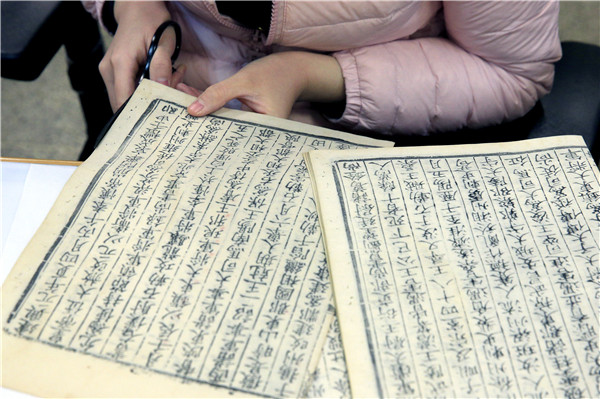Master of glue
 |
|
JIANG DONG/CHINA DAILY |
China has large collections of ancient books; printing is believed to have first started in China during the Tang Dynasty (618-907) and books were in wide circulation by the time printing was begun by Europeans in 1455.
Some of the books that need repair are in languages the restorers can't read such as Tangut, an extinct square-character writing system used from the 11th to 16th centuries in northeastern China. Sometimes the restorers can't put the pieces of a puzzle together until they refer to archaeologists.
They often find books that have been repaired by others in previous centuries.
"Fixing the books is also a dialogue with ancient people. You can see previous attempts at restoration throughout history. And people were sometimes careless.
"We can fix their errors, but sometimes we also preserve the previous attempt as historical proof. What we can do is to avoid leaving errors for the future."
Cui's reading isn't totally fixed in the distant past. She says she likes reading entertainment gossip from her cellphone on her way home to catch up with the modern world.
The young restorers are guided by Du Weisheng, who has worked as a restorer at the library for 43 years. The 65-year-old has taught thousands of students, and currently has eight apprentices.
"I would rather call myself their teacher, not the master," says Du. "In olden times, it was a tradition that masters only taught 70 to 80 percent of what they knew to apprentices for fear of being surpassed. But I want these young people to surpass me in skills."
Du says he has also learned a lot from his apprentices, who are more adept at using modern technology.
"It's more convenient to use machines to analyze the components of the paper and to help us choose the right materials," he says, but adds that machines can't do everything that human experts can.
The influx of young talent into the restoration room means it is no longer the quiet and solemn place it once was.
"Once no one dared to talk during work but the atmosphere is lively now, and it's necessary for people to communicate and solve problems," says Du.
















